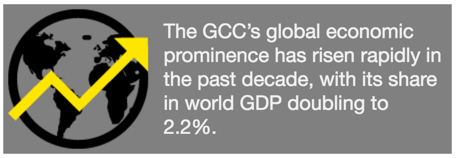
Photo by Acharaporn Kamornboonyarush from Pexels
“Each of the Gulf states has developed long-term strategies, using different combinations of vertical and horizontal diversification. But the region has yet to take advantage of a key lever in implementing these visions: coordinating diversification to leverage each other’s strengths and maximize the power and attractiveness of the GCC economic bloc.”
-Michael Hasbani, Partner, Advisory Service
Diversification in the GCC
The GCC region has been blessed with an abundance in natural resources. The world however is moving fast into a new age of economic growth, and the future scarcity of oil and gas is a reality to be faced. It is therefore time for the private sector in the region to shift their thinking. The challenges that we face in today, are a great opportunity. With the right strategies and an eye towards diversification not only of business activities but also investment, family-owned companies and entrepreneurs in the region will be at the forefront of realizing economic potential.
With Gulf capital markets becoming larger and more liquid, there are new opportunities for local firms to raise capital for growth. Finding ways to support family businesses so that they expand, excel and have a knock-on effect in the economy remains a crucial need. But what sectors should the focus of growth include?

The Diversification of Family Businesses
In the region, businesses have been for a long time protected by laws that presented barriers to entry for competition and investments. With the opening of borders and new business environment this is going to change. I was at a family business forum in the GCC a couple of months ago where one of the questions from the audience members was, “What can we do to further protect ourselves from external competitive forces?” The truth is that it’s almost naïve to believe that in this hyper-connected global economy we can continue to drive business growth protected by national borders. At the moment it is doubtful whether many businesses appreciate the pace of change and what may well be a revolution that flattens the economic landscape across the globe and changes competitive forces. The region itself is currently faced with technological breakthroughs, the creative destruction of industries, and various social, political, and economic forces that are reshaping strategies. What is required is the emergence of a new type of business leadership that focuses its vision towards growth beyond borders and across industries. To focus on real competitive advantages and the knowledge that they have in the businesses they operate in and try to transfer that into other geographies and expand and grow on a global level.
Moreover, the way governments are spending money is different from the approach in the 70’s and 80’s. The way that contracts are awarded and the way families are contracted to do certain activities is going to change. The business families need to think of these trends and try to adapt them and try to be ahead of the game and be able to incorporate some of these new ideas. So diversification has to be part of the discussion.
The levels of diversification
We identify two levels of diversification: The first level will be diversification of the business activities and, the other, diversification of the family’s investment. Family businesses need to rethink their business portfolio and their key activities and what will take them to the next level and through the next industrial revolution. What are the things that they need to let go of and what is the best diversification strategy for the current and next generation?
In another report EY published a number of months ago around unity and strength for the region, we talk about the fact that a lot of people don’t realize that today if you combine the GDP of the region, together the numbers stack up to something near the ninth largest economy in the world. Our research tells us that the GCC has the potential to be the sixth largest economy in the world within the next ten years. This is a huge incentive for all of us to work together, to open up our markets, and to continue representing a global economic force.
Based on EY’s Growth Drivers report.
Article by Michael Hasbani, New Markets Leader, MENA Advisory, EY









